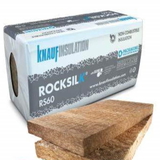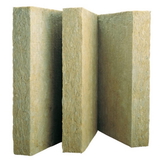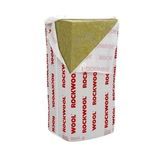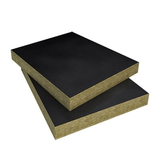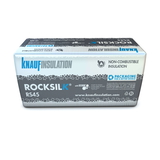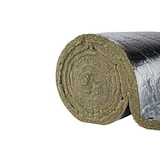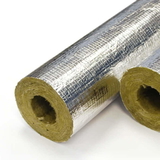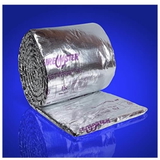- Blogs
- Mineral Wool Insulation: An Effective Alternative For Fire Resistance And Soundproofing
Mineral Wool Insulation: An Effective Alternative For Fire Resistance And Soundproofing
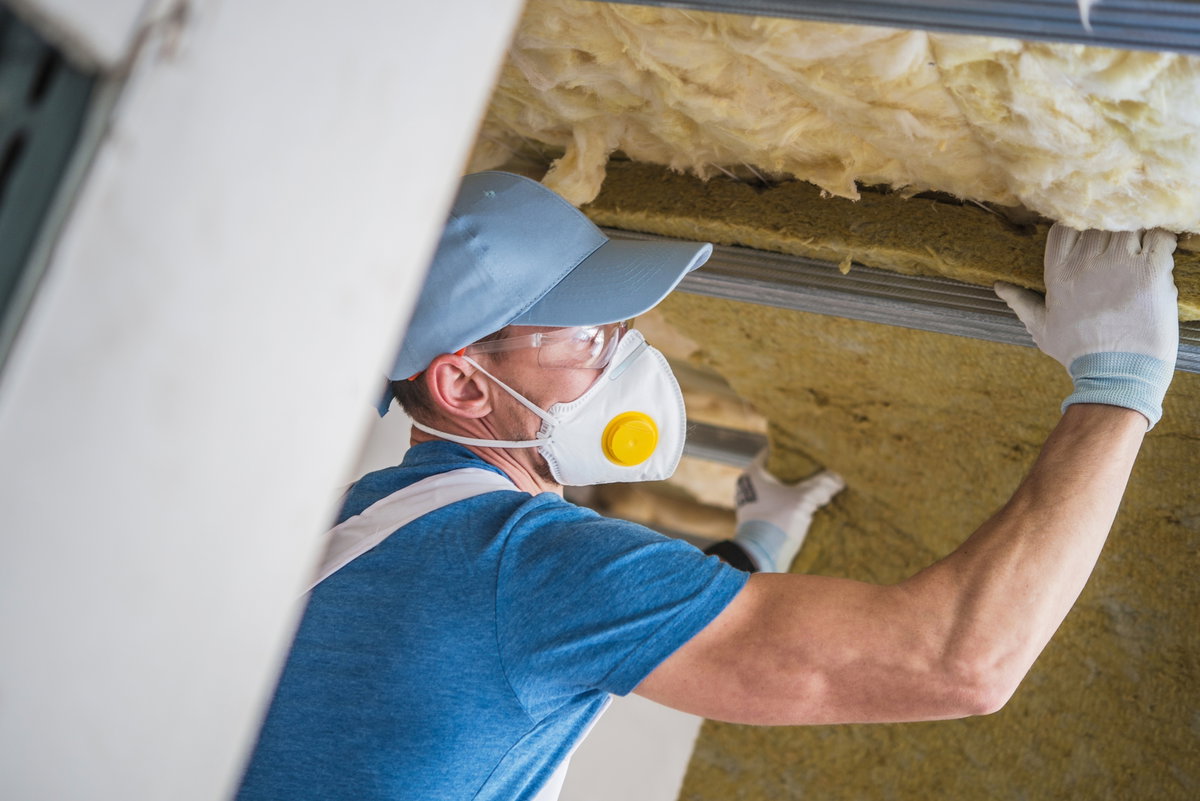
As a mineral wool insulation supplier, we have seen firsthand the benefits that this high-performing insulating material can offer. Mineral wool fibre is known not only for its insulating properties but also its soundproofing and other excellent features which we will be discussing in detail in this blog.
Mineral wool products are made from natural materials such as basalt or slag wool, which are melted down and spun into fibers, that create an effective barrier against heat transfer and sound transmission. This makes it a popular choice for construction projects that require high levels of safety and privacy.
What is Mineral Wool Made of?
Mineral wool is made by melting natural rock or minerals, typically basalt, diabase, or slag, at high temperatures of around 1,500°C to 2,700°C. The molten rock or mineral is then spun into long, thin fibers using a process called centrifugal spinning.
During centrifugal spinning, the molten rock is poured onto a spinning wheel, which throws the material outwards to form long, thin fibres. As the fibres cool, they are collected on a conveyor belt or in a collection chamber, where they are compressed into mats or batts of insulation.
The process of centrifugal spinning can be adjusted to control the thickness and density of the mineral wool fibres, which determines the insulating properties of the final product. The fibres can also be treated with binders to improve their cohesion and strength. It can be manufactured in a range of forms, including batts, blankets, loose-fill, and boards.
Uses Of Mineral Wool:
Mineral wool insulation is a versatile insulation material that can be used in a variety of applications in both residential and commercial buildings. Here are some of the common uses of mineral wool insulation:
-
Walls: Mineral wool insulation slabs can be installed in the walls of buildings to reduce heat loss and improve energy efficiency. It is available in batts or rolls that can be cut to fit between the studs or in blown-in form.
-
Attics: Loose-fill mineral wool insulation can be blown into the attics of buildings to improve insulation and prevent heat loss.
-
Floors: Mineral wool insulation between floor joists of buildings reduces noise transmission and improves energy efficiency.
-
Roofs: Mineral wool batts can be installed on flat or sloped roofs to provide thermal insulation and improve fire resistance. Mineral wool loft insulation when laid between ceiling joists prevents heat loss through roofs.
-
HVAC systems: Mineral wool insulation for pipes like Rockwool pipe lagging etc is used to insulate pipes across projects. Mineral wool duct boards and ductwrap can be used to insulate ductwork.
Non-Combustibility: A Key Feature Of Mineral Wool Insulation ![]()
Non-combustibility is a key feature of mineral wool insulation. Made from inorganic materials, mineral fibre does not contain any organic material that can ignite and burn. When exposed to high temperatures or flames, mineral wool insulation does not contribute to the spread of fire and can help to contain the fire.
This makes this man-made mineral fibre a popular choice for use in buildings where fire safety is a concern, such as in commercial and industrial buildings, schools, hospitals, and public buildings. In fact, many building regulations require the use of non-combustible insulation materials in certain applications.
In addition to its non-combustibility, mineral wool insulation also has a high melting point, which means that it can withstand very high temperatures without melting or losing its insulating properties. This can help to improve the fire resistance of a building and reduce the risk of structural damage in the event of a fire.
Fire-Rated Mineral Wool Products:
Fire-rated mineral wool products are specially designed to provide enhanced fire resistance and help contain the spread of flames in the event of a fire. These products are made using high-density mineral wool fibers that have been treated with fire-retardant chemicals to improve their fire resistance properties. Some examples of fire-rated products are Rockwool Fire Barrier, Rockwool Firepro Duct Board etc.
Fire-rated mineral wool products are classified based on their fire resistance rating, which is determined by testing the material in accordance with industry standards. These ratings indicate how long the material can withstand exposure to fire and high temperatures without losing its structural integrity or contributing to the spread of flames.
Some of the common fire-rated mineral wool products include:
-
Fire-rated mineral wool insulation: This type of insulation is used in walls, floors, and roofs to provide enhanced fire resistance and thermal insulation.
-
Fire-rated mineral wool boards: These are rigid boards made from high-density mineral wool fibers that are used in industrial applications where fire resistance is important.
-
Fire-rated mineral wool pipe insulation: This type of insulation is used to provide thermal and fire protection for pipes in industrial settings.
-
Fire-rated mineral wool panels: These are large panels made from high-density mineral wool fibers that are used in commercial and industrial applications to provide fire resistance and acoustic insulation.
Buy Mineral Wool Now
Mineral Wool Sound Insulation: ![]()
Mineral wool insulation has a high degree of soundproofing capabilities due to its unique properties. The fibers in mineral wool insulation are highly effective at absorbing and dampening sound waves, which makes it an ideal material for use in soundproofing walls, floors, and ceilings in buildings.
When sound waves pass through a material like rock wool, the fibers absorb the energy from the sound waves and convert it into heat. This reduces the amplitude of the sound waves and reduces the amount of sound that is transmitted through the material. Mineral wool batts with higher density acoustically perform better compared to mineral wool insulation rolls with lower densities.
High-density acoustic batts like Rocksilk RS60 and RS45 for example, are commonly used in recording studios, home theatres, and other settings where noise control is important.
Mineral Wool For Insulation
Mineral wool insulation is a highly effective thermal insulator that can help to reduce heat loss and improve energy efficiency in buildings. The fibres in mineral wool insulation trap pockets of air, which creates a barrier that slows down the transfer of heat through the material.
The insulating properties of mineral wool insulation can be further enhanced by adjusting the thickness and density of the material. Thicker and denser insulation is more effective at reducing heat transfer and improving energy efficiency.
Mineral Wool is Environment Friendly ![]()
The manufacturing process of mineral wool insulation involves melting natural rock or slag at high temperatures and spinning it into fine fibres. These fibers are then compressed to form batts, rolls or boards, which can be used in various applications.
One interesting statistic that grabs the attention of many is that mineral wool insulation has a significantly lower environmental impact compared to other insulation materials. This is because the raw materials used in its production are abundant and widely available, reducing the need for mining and extraction activities.
Additionally, the energy required to manufacture mineral wool insulation is relatively low, making it a more sustainable option.
Glass Mineral Wool Vs Rockwool
Glass mineral wool insulation is made from spun glass fibres that can melt when exposed to high temperatures. The benefits of using mineral wool insulation over fibreglass are clear when considering fire safety.
Fiberglass has a lower melting point and low thermal conductivity than mineral wool insulation and can easily ignite when exposed to heat. Mineral wool insulation, on the other hand, can withstand high temperatures without igniting or contributing to the spread of flames. This makes it an ideal choice for use in buildings where fire safety is a top priority.
Furthermore, mineral wool has excellent soundproofing properties due to its dense fibre structure which absorbs sound waves effectively. It is clear that mineral wool insulation offers many advantages over traditional fibreglass options.
Frequently Asked Questions
How To Cut Mineral Wool Insulation?
Cutting mineral wool insulation is a fairly straightforward process, but it is important to take the necessary safety precautions to protect yourself from the small fibers that can become airborne during cutting. Here are some general steps to follow when cutting mineral wool insulation:
-
Put on safety gear: Before you start cutting, put on safety gear including gloves, safety glasses, and a dust mask to protect yourself from the fibers.
-
Measure and mark the insulation: Measure the area where you need to install the insulation and mark the insulation with a marker or chalk to indicate where to cut.
-
Cut the insulation: Use a long serrated knife or a utility knife to cut the insulation. Make sure to use a sawing motion and avoid pressing too hard to prevent compressing the fibers.
-
Trim the edges: After cutting the insulation, use a straight edge or a long ruler to trim the edges and make sure that they are straight and even.
-
Install the insulation: Once the insulation is cut to the correct size, you can install it in the desired location.
-
Clean up: After cutting the insulation, be sure to clean up any loose fibers using a vacuum cleaner or a damp cloth.
It is important to note that the specific method for cutting mineral wool insulation may vary depending on the type of insulation and the application. Always follow the manufacturer's instructions and take the necessary safety precautions when handling and installing mineral wool insulation.
What Is The Cost Of Mineral Wool Insulation Compared To Other Types Of Insulation?
It's no secret that insulation is a crucial component in any construction project, especially when it comes to fire resistance and soundproofing. Mineral wool insulation offers an effective alternative to other types of insulation on the market, but what about its cost?
The installation process for mineral wool insulation can be more labour-intensive compared to other types of insulation, leading to higher costs. However, when considering durability comparison and the long-term benefits of using mineral wool insulation, the initial cost may be well worth it.
Can Mineral Wool Insulation Be Easily Installed In Existing Buildings?
Installation challenges and retrofitting options for mineral wool insulation in existing buildings are important considerations. The process of installing mineral wool can be challenging, particularly in older buildings where spaces may not be easily accessible.
Retrofitting options may include the use of blown-in insulation or a combination of batts and blown-in insulation to ensure adequate coverage. It is important to consider these challenges and options when recommending this type of insulation for existing buildings.
By carefully assessing the space and providing tailored solutions, mineral wool insulation can be successfully installed in a variety of building types.
How Does The R-Value Of Mineral Wool Insulation Compare To Other Types Of Insulation?
When it comes to insulation, the R-value is crucial in determining its effectiveness in providing energy efficiency benefits.
Mineral wool insulation has an impressive R-value that can compete with other types of insulation such as fibreglass and cellulose. In fact, mineral wool insulation can have a higher R-value per inch than these traditional types of insulation.
Can Mineral Wool Insulation Get Wet?
Mineral wool insulation is moisture-resistant, but it is not completely waterproof. If mineral wool insulation gets wet, it can lose some of its insulating properties and may become compressed or discoloured.
However, minor exposure to moisture is unlikely to cause significant damage to mineral wool insulation. The insulation will still retain some of its insulating properties and can still be used effectively.
If mineral wool insulation does get wet, it is important to allow it to dry out completely before installing it. Wet insulation can harbour mould and bacteria, which can lead to health problems and reduce the effectiveness of the insulation.
In addition, it is important to ensure that mineral wool insulation is properly sealed and protected from moisture during installation. This can help to prevent moisture from getting into the insulation and causing damage.
Conclusion
In conclusion, mineral wool insulation is a versatile and effective solution that offers superior fire resistance and soundproofing qualities. Its environmental impact is minimal, making it a sustainable choice for those looking to reduce their carbon footprint while improving their building's energy efficiency.
With professional installation, mineral wool can offer long-lasting benefits to any property owner looking to improve their building's safety and comfort levels. We recommend considering mineral wool as a viable option when selecting insulation materials for your next project.
For top-rated mineral wool insulation boards, batts, and rolls visit Buy Insulation Online. We stock some of the UK's well-known brands like Rockwool, Knauf and more. Just like mineral wool, we reduce your carbon footprint, by planting a tree with your every purchase!

Samuel Hitch
Managing Director
Buy Insulation Online.
Leave A Reply
Your feedback is greatly appreciated, please comment on our content below. Your email address will not be published. Required fields are marked *
